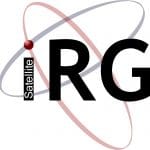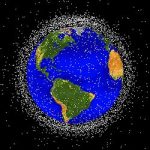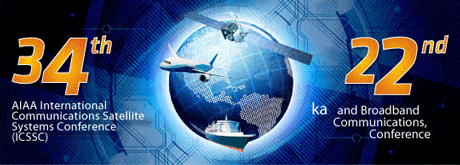 I’m pleased to have been invited to sit on the panel “Debris – What Debris?” on Day 3 of the APSCC 2018 Satellite Conference & Exhibition (APSCC 2018), organised by Asia-Pacific Satellite Communications Council (APSCC), in Jakarta, Indonesia, 2 – 4 October 2018.
I’m pleased to have been invited to sit on the panel “Debris – What Debris?” on Day 3 of the APSCC 2018 Satellite Conference & Exhibition (APSCC 2018), organised by Asia-Pacific Satellite Communications Council (APSCC), in Jakarta, Indonesia, 2 – 4 October 2018.
It’s of particular interest to me as I’m leading the expansion of Goonhilly Earth Station (GES) in Australia and Asia Pacific and expanding our Deep Space Network and other developments in the region.
The Panel moderator is Martin Coleman, Executive Director of the Satellite Interference Reduction Group (sIRG) which has been so proactive and successful over many years to encourage the industry to take positive actions to reduce interference.
But it’s more than just interference that threatens everything we depend upon from space. What we really mean is “Looking after Space!”
Almost everyone in the World is dependent upon satellite services either directly or indirectly for the channels they watch be they domestic or international and for our part satellite interference is still a hot topic for the satellite industry over many years. Space has transformed our lives and enabled globalisation. Corporations, national governments, international agencies and individual citizens now consistently rely on spacecraft-supported communication, navigation and timing, imagery, and remote sensing information capabilities to conduct daily business. Space transportation initiatives have now taken hold. Space is no longer the domain of an extended superpower struggle – it has evolved and become a place of utility for all mankind.
The current orbital environment
Our increased dependency on space capabilities demands an understanding of the associated vulnerabilities in what has become an increasingly congested Earth-orbiting space environment. From just one spacecraft in orbit in 1957, thousands of spacecraft, their associated transportation systems (spent rocket stages) and other related debris have entered the space domain.
While many of these objects have either transited out of Earth orbit or re-entered Earth’s atmosphere and disintegrated, nearly 23,000 trackable objects currently remain in orbit. This includes Vanguard 1, the oldest orbiting Earth object, along with 1,150 active spacecraft and thousands of retired spacecraft or other orbiting debris, ranging in size from fragments to 25 metre long rocket stages at altitudes from 100 km to over 120,000 km from the Earth’s surface. Given the significantly reduced atmospheric drag in higher Earth orbits many objects will stay in space for decades, and in geosynchronous orbits (GEOs) objects could remain in space for hundreds of years or more.
Here are links to Analytical Graphics (AGI) SpaceBook, a real-time satellite viewer, and an Animation based upon real data. These two show visually what the space environment looks like.
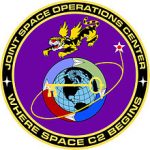
The main example for this panel to follow is that of the Combined Space Operations Centre (CSpOC) (formerly the Joint Space Operations Centre JSpOC) based in the US, which actively tracks all objects of ‘softball size’ (10 cm) or larger in orbit, using a combination of ground radar and optical systems and some space-based sensors.
Of the 23,000 trackable objects 7,500 are considered very small and are followed only by an extremely limited number of sensors. Degradations among those sensors can have a significant impact on our ability to track and, more importantly, to provide safety of flight for both critical manned and unmanned space vehicles. Remember, the object the size of a marble (1 cm) has the potential to destroy a spacecraft.
Presently such small objects are not tracked, and only rarely are objects between 1 cm and 10 cm consistently tracked. Estimates of the number of such objects in low-Earth orbit (LEO) range between 300,000 and 560,000. It is expected that as sensors and computing systems improve more small debris will be discovered and thousands more of these objects could be tracked.
Before 2007, the number of trackable objects orbiting Earth increased at a predictable rate. But since then, three incidents have completely changed the situation. In 2007 the Chinese carried out an anti-satellite test against their own spacecraft known as Fengyun 1C. Two years later, there was a collision between two spacecraft known as Iridium 33 and Cosmos 2251. And in 2012 the upper stage of a Russian BRIZ-M rocket exploded.

Iridium 33
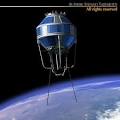
Kosmos 2251
Together, these events were a watershed. Between them they nearly doubled the number of catalogued objects in orbit, drastically increasing the amount of close approaches between orbiting objects, or ‘conjunctions’, that are detected. Additional debris from those three events are found and tracked nearly every day. JSpOC is set up to notify spacecraft owner/operators around the globe on a continuous basis, giving out information on which they can base collision avoidance manoeuvre decisions.
Which is why the Space Data Association (SDA) was set up in the first place to complement this vital work done by JSpOC and recognise the problem for the commercial industry. Other organisations such as CSIRO, JAXA, Korea, ESA, DLR, LEO Labs, ExoAnalytic, AGI and gmv to name but a few are also heavily involved with similar work and cooperation, bringing vital new developments and technology to remedy the debris problem.
In the Asia Pacific region another key organisation is the Australian Space Environment Research Centre (SERC). The SERC is a collaboration between government agencies, universities and space industry professionals from Australia, USA and Japan. Other key organisations that are active in this field and in this region include Electro Optic Systems (EOS), Silentium, Astroscale, the Space Industry Association of Australia (SIAA), the South Australian Space Industry Centre (SASIC) and the new Australian Space Agency.
In general, conjunction warnings are issued that are under 5 km miss distance at GEO or less than 1 km miss distance in LEO and done within 72 hours of the time of closest approach. Currently, the estimated day-to-day statistical chance of a collision is 1×10-6 (one in a million); and 70 per cent of detected conjunctions can be traced back to one of the above three events!
To meet space safety challenges, thousands of observations every 24 hours are collected to generate a current average of 30 daily collision warning notifications that are provided to global spacecraft owners and operators. This gives them position and trajectory information so they can, where possible, take avoidance measures.
The proliferation of smaller spacecraft
Other considerations, that given the inevitable increase in LEO constellations and given that these objects travel at speeds of up to 17,500 mph (more than 10 times the speed of a bullet) collisions of even the smallest objects with any spacecraft could be catastrophic and propagate further debris.
In addition, there is a growing appetite today for small, inexpensive space payloads. The number of these systems and their size presents opportunities to academics, students, innovators, entrepreneurs and others hoping to access space on a low-cost basis. However, this also creates a related challenge and increased risk to space operations. If not deployed into orbit in a responsible manner, these objects can be exceedingly difficult to identify in a timely manner and could threaten other objects in orbit. The proliferation of CubeSats (usually 10 cm cubes) and associated technology has exacerbated traditional tracking challenges.
In addition, the emerging space transportation industry will also need to consider carefully the spaceflight safety risks from debris.
Increasing partnerships and meeting challenges head-on
The Panel will focus on the following key subject areas…
SSA Collaboration is key
• The significance and enormity of the task area and that no one nation can achieve SSA
without working with others
• The different approaches to SSA (Military, Civil & Commercial)
• Cooperate to ensure SSA develops and with all space programs
• The need for appropriate and proportionate regulation supported by the correct level of technology
Current SSA Trends and Challenges
• Overview of the research conducted by Organisations on space debris
• State of the art Optical communications
• The beginnings of space tourism communications
• Where does the problem lie?
• Next steps
Industry Cooperation for SSA
• Current mitigation Processes and Technologies
• Risk of Collision and damage to the space environment
• Importance of transparent data
• Need for international and industry wide cooperation
• SSA – Are our Models up-to-date?
So it looks like being an interesting Panel discussion with Conference attendees from around the globe, given that the APSCC is one of the major annual international satellite communications conferences in the Asia-Pacific region!

